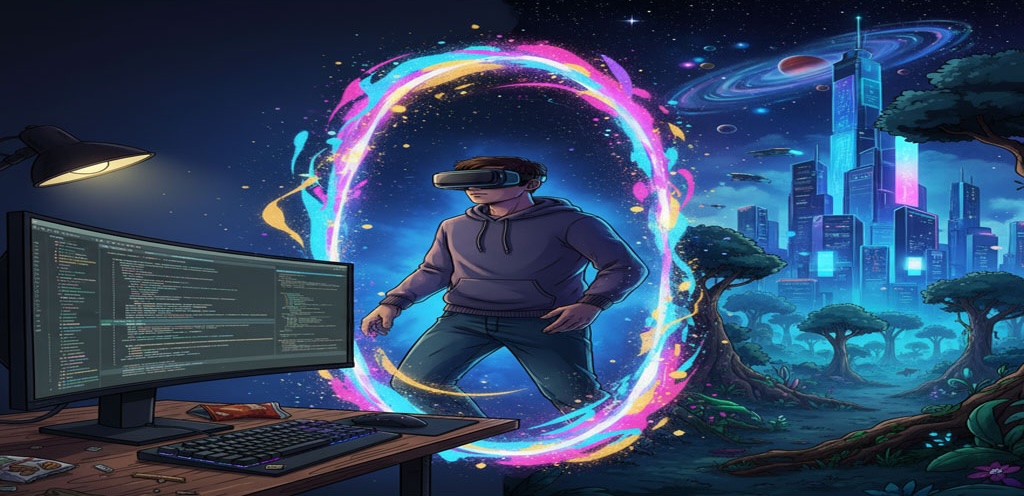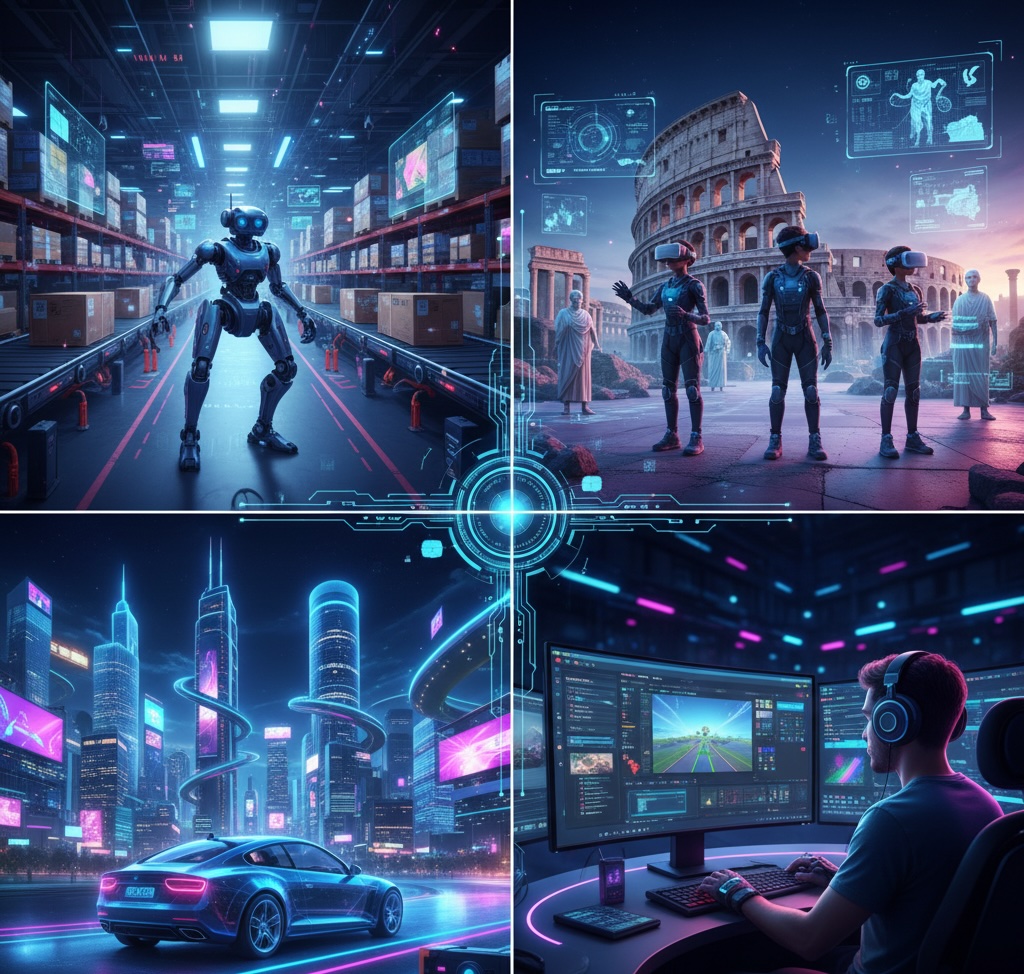
Discover Google Gemini 3 capabilities, from Deep Think benchmarks to the Antigravity IDE. See how this full-stack model outperforms ChatGPT 5.1 today.

In the dynamic and fast-paced field of artificial intelligence, Google DeepMind has once again redefined the boundaries of innovation with Genie 3. This revolutionary generative world model is engineered to transform simple text prompts into fully interactive, navigable 3D environments in real time. Unlike previous technologies that focused on generating static images or short, passive video clips, Genie 3 creates dynamic, explorable digital worlds, marking a fundamental milestone on the path toward more sophisticated, general-purpose AI. This capability heralds a new era for numerous sectors, including AI agent training, immersive education, and creative content generation, positioning Genie 3 as a pivotal development in the ongoing AI renaissance.
This comprehensive article will explore the core functionalities, technical specifications, and transformative potential of Genie 3. We will analyze its key features, compare its advancements over its predecessors, and examine its prospective applications across various industries. Furthermore, we will discuss its crucial role as a stepping stone in the ambitious pursuit of artificial general intelligence (AGI), providing a complete overview of how this technology is set to redefine our interaction with digital realities and accelerate the development of more autonomous and capable intelligent systems.
At its core, Genie 3 is a sophisticated AI system designed to generate dynamic, interactive 3D environments from natural language descriptions. This powerful tool allows users to simply type a prompt, such as "a misty forest at dawn with an ancient stone path," and instantly step into a navigable virtual world that matches the description. What distinguishes Genie 3 from other generative models is its real-time interactivity. It operates at a fluid ~24 frames per second (fps) with a 720p resolution, offering a visually engaging and seamless experience that feels more like a video game than a static AI-generated image.
Genie 3 represents a monumental leap from passive content generation to active world simulation. While previous models could produce impressive but non-interactive video clips, Genie 3 constructs worlds that users can actively explore and influence. The model's architecture generates each frame autoregressively, meaning every new frame is created based on the sequence of preceding frames and the user's latest action. This method allows for a persistent and coherent experience, where the environment maintains its consistency for several minutes of continuous interaction. This breakthrough is fundamental to creating immersive and believable virtual spaces, laying the groundwork for a new generation of AI-powered applications that depend on environmental coherence and responsiveness.
The true innovation of Genie 3 lies in its unique combination of features that work in concert to create responsive and consistent virtual worlds. These capabilities not only enhance the user experience but also provide a robust platform for complex AI research and development. From its real-time interaction engine to its emergent visual memory, Genie 3 is engineered to simulate dynamic environments with an unprecedented level of detail and coherence, surpassing the limitations of previous generative models.
The standout feature of Genie 3 is its capacity for real-time interaction. Users are not mere passive observers; they are active participants who can navigate and explore the generated worlds. The system processes user inputs, such as keyboard commands for movement, and renders new frames instantly to reflect those actions, maintaining a fluid 24 fps. This responsiveness is crucial for applications requiring immediate feedback, such as training simulations for autonomous agents or creating interactive educational modules. The ability to move freely within a world that adapts in real time makes the experience profoundly more engaging and useful than simply watching a pre-rendered video. While 720p and 24 fps may not match the specs of high-end video games, achieving this feat in a purely generative model without a traditional rendering engine is a massive computational achievement.
A significant challenge in generative world modeling has been maintaining consistency over time. Genie 3 addresses this with an emergent visual memory that retains contextual details for up to a minute and overall environmental consistency for several minutes. This means if a user walks away from an object and returns, the object will remain in the same place, preserving the continuity of the virtual space. This persistence is an "emergent property" of the model's architecture, which builds worlds frame-by-frame without relying on explicit 3D data like NeRFs or Gaussian Splatting. This capability is vital for creating believable simulations where the world behaves according to logical rules, making it a reliable sandbox for training AI agents that need to understand object permanence and causality.
Genie 3 empowers users with creative control through "promptable world events." While navigating an environment, a user can introduce new text prompts to dynamically alter the scene on the fly. For instance, one could be exploring a sunny desert and type "start a sandstorm" or "add an oasis with palm trees," and the model will seamlessly integrate these changes into the existing environment. This feature transforms the user from a mere explorer into a co-creator of the virtual world. It opens up limitless possibilities for dynamic storytelling, rapid prototyping in game development, and creating "what if" scenarios to test the adaptability of AI agents to changing conditions.
The versatile and powerful capabilities of Genie 3 unlock a vast landscape of potential applications across numerous fields. By providing a tool to rapidly generate and modify interactive 3D worlds, this technology stands to revolutionize workflows, enhance learning, and create entirely new forms of entertainment and research. While access is currently restricted to a select group of researchers and creators to ensure responsible development, the prospective uses for Genie 3 are extensive and transformative.
One of the most significant applications for Genie 3 is in the training and evaluation of artificial intelligence agents. Developing autonomous systems, such as robots or self-driving vehicles, requires training them in a vast array of scenarios, including rare and dangerous edge cases. Genie 3 can create safe, diverse, and controllable virtual environments where these agents can learn and practice without real-world risks or costs. For example, an autonomous vehicle's AI could be tested in simulations of extreme weather conditions or unexpected obstacles that would be hazardous to replicate physically. Because these worlds are generated on the fly, researchers can create a nearly infinite curriculum for AI agents, implementing techniques like curriculum learning, where the complexity of the environment gradually increases as the agent improves. This accelerates the development of more robust and generally capable systems, helping to address the "sim-to-real" challenge—the gap that often exists between performance in simulation and in the real world.

Beyond AI research, Genie 3 holds immense promise for education and the creative sectors, offering tools that were once the domain of science fiction.
While Genie 3 represents a monumental step forward, it is important to acknowledge its current limitations. The model's interaction duration is currently capped at a few minutes, after which consistency may degrade. This falls short of the hours-long persistence needed for fully immersive video games or extensive training simulations. Additionally, the model can sometimes struggle with physics inaccuracies, complex multi-agent interactions, and the precise replication of real-world locations. Its understanding of physics is not based on a dedicated engine but is a learned approximation, which can lead to unrealistic behaviors.
Google DeepMind is actively working to address these challenges. Future research will likely focus on extending the interaction horizon, improving the model's understanding of physics, and enabling more complex agent behaviors. The team also plans to expand access beyond the current limited research preview, allowing more creators and developers to explore its capabilities and contribute to its responsible evolution. These ongoing developments suggest that the already impressive power of Genie 3 is just the beginning, with future iterations poised to become even more capable and integrated into our digital lives.
Genie 3 is more than just a powerful content creation tool; it is a critical component of Google DeepMind's broader mission to develop artificial general intelligence (AGI). World models like Genie 3 are considered a key stepping stone on the path to AGI because they provide rich, simulated environments for training generalist AI agents. An agent that can learn to navigate and perform tasks across an unlimited variety of dynamically generated worlds is more likely to develop the flexible and adaptive intelligence characteristic of AGI. By providing a platform to test reasoning, adaptability, and long-term planning in novel contexts, Genie 3 serves as an invaluable sandbox for the next generation of intelligent systems, especially in the field of embodied AI, where agents learn through interaction with their environment.
In conclusion, Genie 3 stands as a landmark achievement in generative AI, shifting the paradigm from static content generation to real-time, interactive world simulation. Its ability to create navigable 3D environments from text prompts opens up transformative possibilities for AI training, education, gaming, and beyond. While limitations exist, the rapid progress it represents signals a promising future where the boundaries between the physical and digital worlds become increasingly blurred. The continued development of this technology will undoubtedly play a crucial role in shaping the future of artificial intelligence and its integration into society.
If you are interested in exploring how cutting-edge AI solutions can benefit your organization or creative projects, we invite you to reach out. Contact us through our online form to discuss how we can help you navigate the future of generative AI.

Discover Google Gemini 3 capabilities, from Deep Think benchmarks to the Antigravity IDE. See how this full-stack model outperforms ChatGPT 5.1 today.

Explore the ChatGPT Atlas browser, OpenAI's new AI super-assistant and Google competitor. Learn its Agent Mode features, privacy controls, and what it means for the future of web browsing.